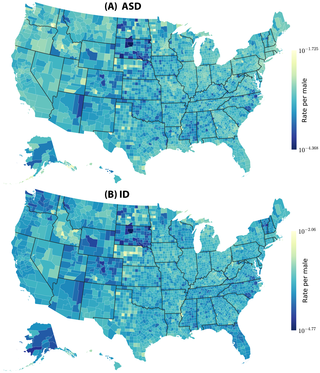Autism Linked To Parental Exposure To Pollution; As Birth Defects Increase, So Do The Risk Of The Disorder

Theories abound about autism spectrum disorder (ASD). Some say the condition is passed down through the generations, while others suspect compulsory childhood vaccines whose makers put profit ahead of people. Or, it might just be the wind.
A new review of autism studies shows strong evidence that air pollution contributes to susceptibility for developmental conditions such as ASD and intellectual disability. Andrew Rzhetsky, of the University of Chicago, says the research team found a correlation between increased ASD rates and parental exposure to pollution, as measured by an established link to birth defects. For every one percent increase in birth defects, the autism rate rose 283 percent, they found.
“Autism appears to be strongly correlated with rate of congenital malformations of the genitals in males across the country. This gives an indicator of environmental load and the effect is surprisingly strong,” Rzhetsky said in a statement. “For future genetic studies we may have to take into account where data were collected, because it’s possible that you can get two identical kids in two different counties and one would have autism and the other would not.”

In reaching the conclusion, the researches considered many possible factors in the development of ASD, such as “nurture and nature,” but also the influences of socioeconomics and public policy. Rzhetsky and his team began by analyzing the geographic spread of ASD cases, which they compared to insurance claims data covering nearly a third of the American population. What they saw was a humongous 283 percent jump in ASD that matched a one percent greater incidence in birth defects, which indicate parental exposure to air pollution.
Such geospatial clustering of ASD cases have been seen in California, Texas, North Carolina, and Utah in earlier investigations, suggesting a more localized risk for the condition. But whether environmental toxin or a parent's level of education, researchers could not pinpoint a leading cause.
“Our results have implications for the ongoing scientific quest for the etiology of neurodevelopmental disorders,” the researchers wrote in a paper published this month. “We provide evidence that routinely expanding the scope of inquiry to include environmental, demographic, and socioeconomic factors, and governmental policies at a broad scale in a unified geospatial framework.”
As yet, the root biological causes of ASD and intellectual disability remain a mystery. The condition affects one in 88 American children, according to the Centers for Disease Control and Prevention.
Source: Rzhetsky, Andrey, Bagley, Steven C., Wang, Kanix, Lyttle, Christopher, S., Cook Jr., Edwin H., Altman, Russ B., et al. Environmental And State-Level Regulatory Factors affect The Incidence Of Autism And Intellectual Disability. PLOS Computational Biology. 2014.



























